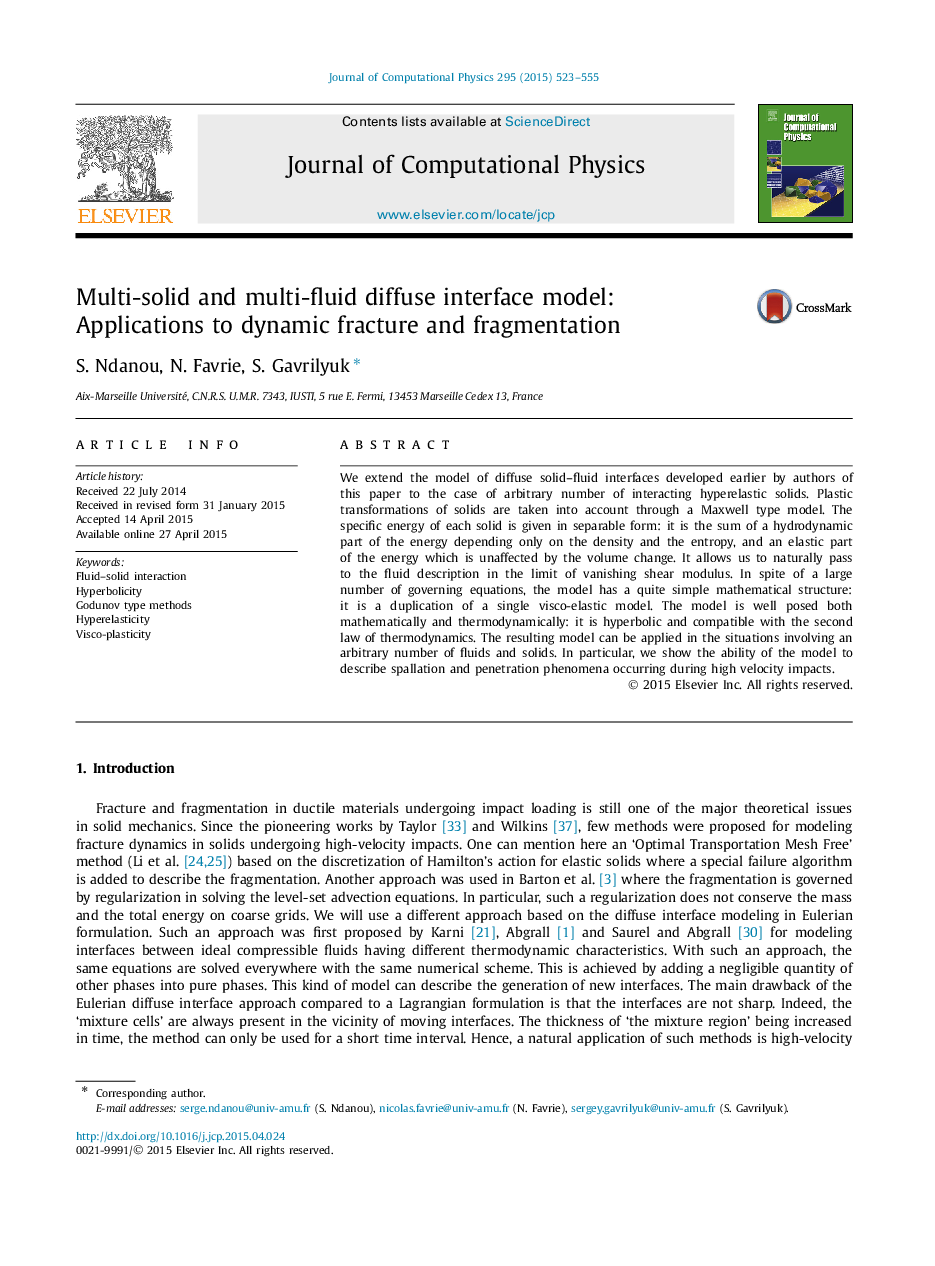| Article ID | Journal | Published Year | Pages | File Type |
|---|---|---|---|---|
| 6931404 | Journal of Computational Physics | 2015 | 33 Pages |
Abstract
We extend the model of diffuse solid-fluid interfaces developed earlier by authors of this paper to the case of arbitrary number of interacting hyperelastic solids. Plastic transformations of solids are taken into account through a Maxwell type model. The specific energy of each solid is given in separable form: it is the sum of a hydrodynamic part of the energy depending only on the density and the entropy, and an elastic part of the energy which is unaffected by the volume change. It allows us to naturally pass to the fluid description in the limit of vanishing shear modulus. In spite of a large number of governing equations, the model has a quite simple mathematical structure: it is a duplication of a single visco-elastic model. The model is well posed both mathematically and thermodynamically: it is hyperbolic and compatible with the second law of thermodynamics. The resulting model can be applied in the situations involving an arbitrary number of fluids and solids. In particular, we show the ability of the model to describe spallation and penetration phenomena occurring during high velocity impacts.
Related Topics
Physical Sciences and Engineering
Computer Science
Computer Science Applications
Authors
S. Ndanou, N. Favrie, S. Gavrilyuk,
